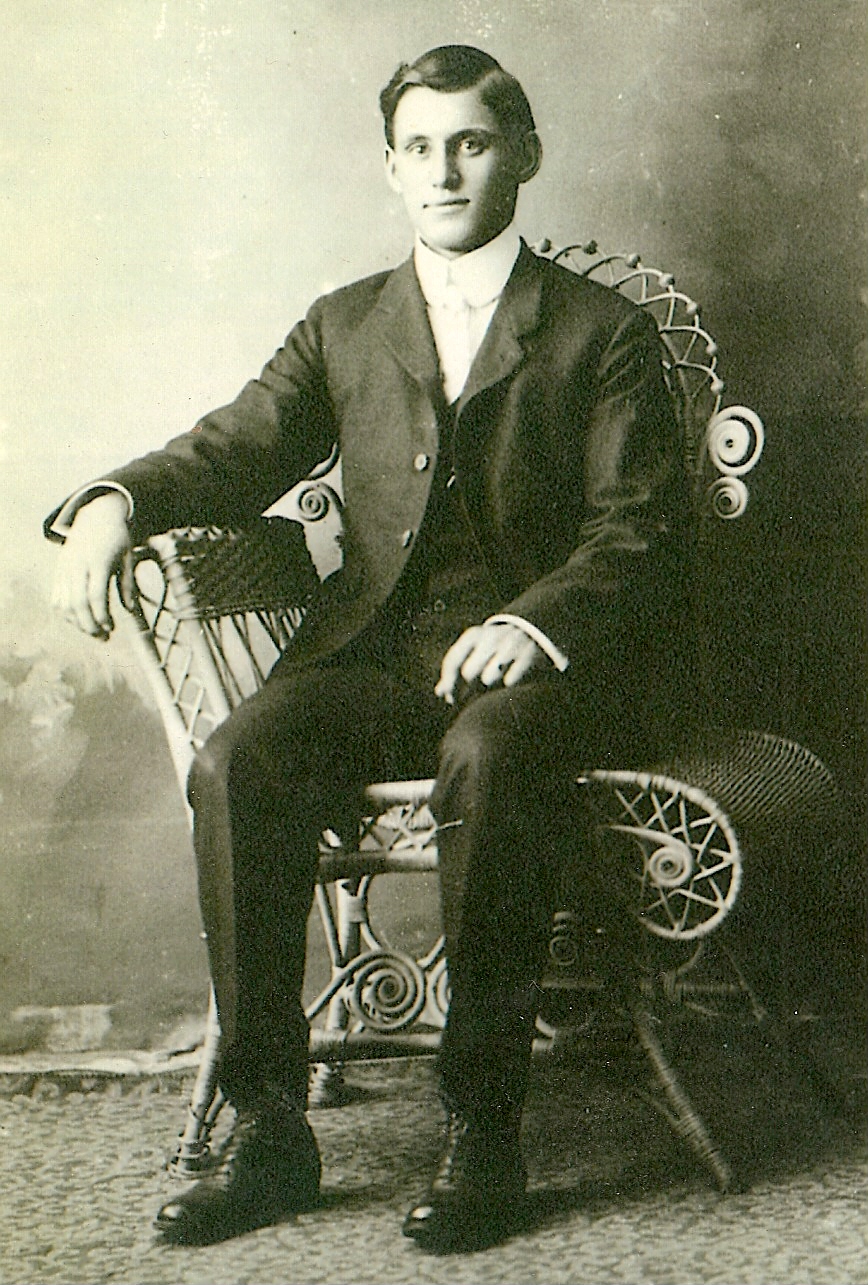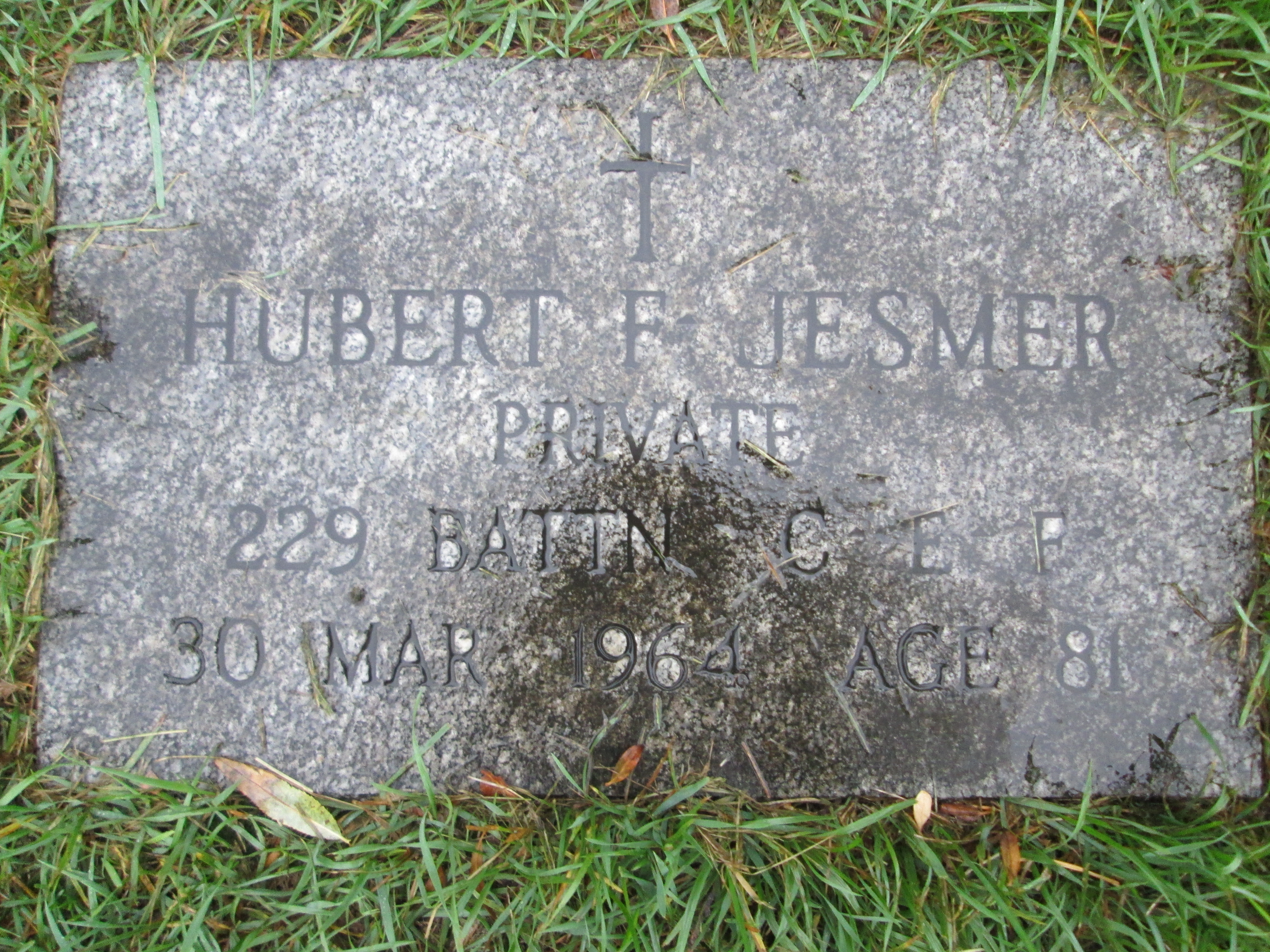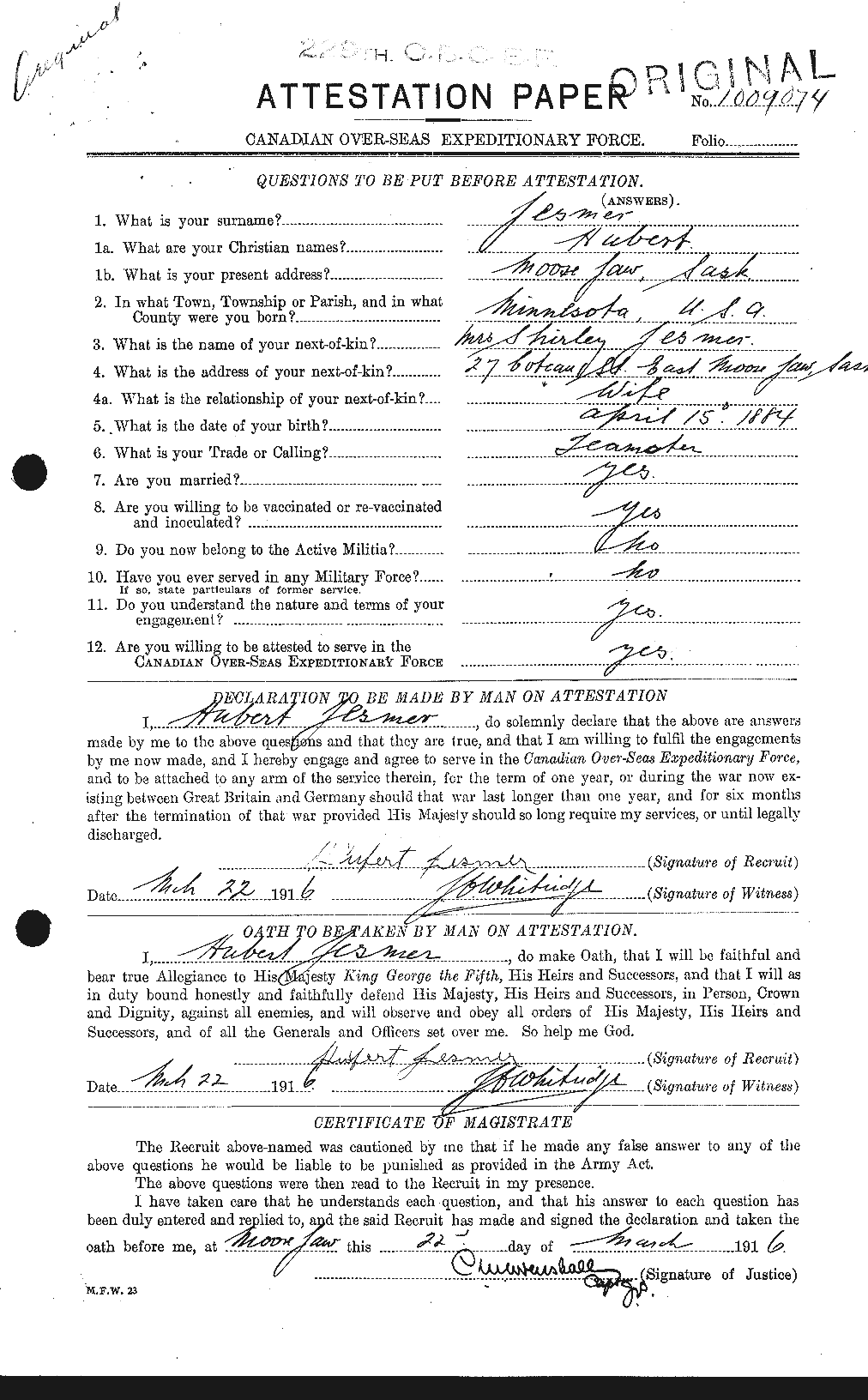Hubert Francis Jesmer is one of the few people in my family tree who joined the army in WWl.
Hubert Francis Jesmer is one of the few people in my family tree who joined the army. (WWl)
“A letter was received Wednesday by Ms Wm Kaliher from her brother, Hubert Jesmer. Mr. Jesmer was with the USA Army in England and will go to France in a couple of months. He was at one time reported to have been killed.” – The Princeton Union August 9th, 1917. Page 5 Image 5.
January 8, 1918. (The Princeton Union)
“Mrs. Hubert Jesmer is her eon a visit to Mr and Mr Louis Jesmer and Mr and Mrs William Kaliher. Hubert is now in France with the Canadian forces.”
“In a letter received by Mrs. Wm. Kaliher from her brother, Hubert Jesmer, who is in France, he says that, with eight other men, he was wounded by shrapnel on August 17. None of the men were killed. He had not slept in a bed for a year until incapacitated by shrapnel. He was in one of the big drives but did not receive a scratch.”
The Princeton Union September 19, 1918.
Before the World War he went to Canada. He enlisted in the Canadian Forces and served overseas. He was wounded once: a bullet passed through his neck but it happened to leave such a clean wound that there was little serious infection from it. After the armistice was declared while still on the battle field; he was wounded by a shell exploding.
When he returned to Canada, Jesmer, like so many of the Canadian soldiers, was given a homestead which, however did not prove to be of much value. He finally settled on an island in the Berens River near Hudson Bay. ..The Winnipeg Tribune 4-29-1933




I know that my grandfather, Harvey Howard Jesmer, joined the Canadian Army on 1918. Harvey was Hubert’s nephew, also from Saskatchewan. Hubert volunteered to go and fight in WWl in 1916, the beginning of the war. He was a from a brigade formed in Moose Jaw Saskatchewan. He went there even when he was a young husband of 22 years old and a father of two little kids. He was sent to Europe. His brigade merged with others. From some articles, it looks like his brigade was involved in bridge building. It was a very tough war to be in. Hubert was wounded in 1918 and came back to Canada. He moved the family away from hustle and bustle of Moose Jaw (little Chicago) and moved to the shores of Lake Winnipeg Manitoba, to a rural Catholic community, Camp Morton (also Faxa Manitoba), near present day Gimili.

229th Battalion Background Information Organized in November 1915 under the command of Lieutenant-Colonel H. D. Pickett. Authorization published in General Order 69 of 15 July 1916. Mobilized at Moose Jaw. Recruited in Moose Jaw, Rouleau, Gull Lake, Elbow, Melville, Kincaid and Indian Head. Embarked from Halifax 18 April 1917 aboard NORTHLAND. Disembarked England 29 April 1917. Strength: 17 officers, 526 other ranks. Absorbed by 19th Canadian Reserve Battalion on 29 April 1917. Disbanded by Privy Council Order 2545 of 15 September 1917. Redesignated 3rd Battalion Canadian Railway Troops (Privy Council Order 2331 of 5 September 1918). Brass and bugle bands in Canada. Published “The Sentry Box” in Canada.
http://collectionscanada.gc.ca/obj/005/f2/005-1142.29.022-e.pdf
“In the cave all day, five killed, eleven wounded. A shell went through the dug-outs. Nellie Cowan just left it before; he says “Gee, I’m lucky!” Major Ellis died.
We are all cramped up for want of stretching out. The passages were only about three feet wide and we all had to sit down with our backs to the wall and our knees up. That is the way we had to sleep.”- Deward Barnes, 19th Battalion, A Company, 24 Apr 1917.1
1 Cane, Bruce. It Made You Think of Home: The Haunting Journal of Deward Barnes, CEF. Dundurn Press Ltd., 2004.
The 19th Battalion was originally formed the 7th of November, 1914 at the Exhibition Park in Toronto, Ontario, Canada. Soon the battalion went from High Park to the shores of England on the USS Scandanavian on the 23rd of May, 1915. They trained in Shorncliffe, Kent at West Sandling camp. By September of that same year the 19th landed in Boulogne, France to begin over 4 years of service on the European continent.
During their service, the men of the 19th fought on the Vimy Ridge, in the environs of Transloy- endured Passchendaele, the German offensives “Michael” and “Georgette”, Amiens, and many other battles to finally push the German Army into surrendering their arms in November of 1918.
During good times, the men often played soccer, had shooting contests, played their instruments, enjoyed church services, and challenged other battalions. During the bad times, they slept in dirty, smelly, infested holes, constantly wore gas protection, marched back and forth from trenches to reserve camps, were bombarded by shells, both gas and not, were exposed to sudden raids by Germans, and even had to shoot their own men who had deserted.
We shall never forget those men who did so much for us.
http://cef19thbattalion.tripod.com/
n 1914, the British Empire, including the Dominion of Canada,
went to war against Germany.
In the course of recruiting volunteers for service,
the Canadian Expeditionary Force was divided into “numbered battalions”.
These battalions then formed the divisions of the “Canadian Corps”
of the First British Army.
This Canadian Corps consisted of 260 numbered infantry battalions,
13 mounted rifle regiments, 13 railway troop battalions, 5 pioneer battalions,
field and heavy artillery batteries, as well as a Machine
Gun Corps, medical, dental, chaplain’s corps, and ambulance,
forestry, and service units.
Almost two-thirds of the Canadian Corps was comprised of recently
arrived English, Scots and Irish born men…including Ernest Leonard,
my grandfather, from Plymouth, Devon who. when war broke,
was playing football with the “Devonians”, a team of English
players in the Toronto District Football League and, of which he
became Captain. In England, he had played for Torquay United
F.C. and was on the championship team of 1909.
GO TO
REGIMENTAL SITE
OF THE
ARGYLL
& SUTHERLAND
HIGHLANDERS
OF CANADA
(PRINCESS LOUISE’S)
C.E.F.
The first divsion of the CEF departed for England in 1914 and the
second division, in 1915 where it prepared for war on Salisbury Plain.
The Argyll & Sutherland Highlanders (Princess Louise’s) Regiment
of Hamilton, Ontario served as a recruiting depot providing 145
officers and 2507 other ranks to the numbered battalions; especially
the 16th, the 19th, and the 173rd Highlanders battalions and so
continues to perpetuate the 19th battalion today.
As part of the Fourth Infantry Brigade, Second Division, the 19th battalion
saw its first action at St. Eloi, France in 1916. It then went
on to distinguish itself in the battles of the Somme, Courcellette,
Vimy Ridge, Hill 70, Passchendale, Drocourt-Quéant, and the
pursuit to Mons. It was the pipes and drums of the 19th that
led a victorious Canadian Corps across the Rhine and into Germany.
Grandad Ernie Leonard was twice-wounded in battle.
http://www.piddingworth.com/19_battalion.html






Interact with us using Facebook